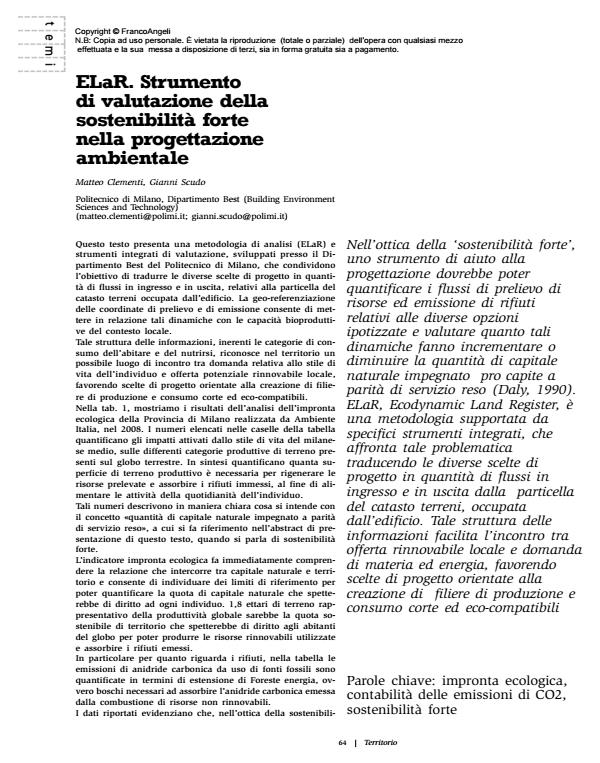ELaR. Strumento di valutazione della sostenibilità forte nella progettazione ambientale
Titolo Rivista TERRITORIO
Autori/Curatori Matteo Clementi, Gianni Scudo
Anno di pubblicazione 2010 Fascicolo 2010/52
Lingua Italiano Numero pagine 4 P. 64-67 Dimensione file 538 KB
DOI 10.3280/TR2010-052010
Il DOI è il codice a barre della proprietà intellettuale: per saperne di più
clicca qui
Qui sotto puoi vedere in anteprima la prima pagina di questo articolo.
Se questo articolo ti interessa, lo puoi acquistare (e scaricare in formato pdf) seguendo le facili indicazioni per acquistare il download credit. Acquista Download Credits per scaricare questo Articolo in formato PDF

FrancoAngeli è membro della Publishers International Linking Association, Inc (PILA)associazione indipendente e non profit per facilitare (attraverso i servizi tecnologici implementati da CrossRef.org) l’accesso degli studiosi ai contenuti digitali nelle pubblicazioni professionali e scientifiche
ELaR. An instrument for assessing strong sustainability in environmental planning - Within a perspective of ‘strong sustainability, a tool for aiding planners should be capable of quantifying resource withdrawal flows and waste emissions in relation to the various options on the table. It should also be able to assess the extent to which these dynamics increase or decrease the quantity of natural capital invested pro capita to provide exactly the same service (Daly, 1990). ELaR (Ecodynamic Land Register) is one such methodology propped up by specific integrated instruments. It tackles this problem by transforming the various design choices into quantities of incoming and outgoing flows to and from the registered parcel of land occupied by the building. Structuring of the information in this way facilitates design choices oriented towards creting short and environmentally compatible production and consumption chains.
Parole chiave:Ecological footprint; accounting of CO2 emissions; strong sustainability.
Matteo Clementi, Gianni Scudo, ELaR. Strumento di valutazione della sostenibilità forte nella progettazione ambientale in "TERRITORIO" 52/2010, pp 64-67, DOI: 10.3280/TR2010-052010